Apr 19, 2018
 Many discussion and research endeavors have focused on subsistence fishermen and their families, but limited resources have been directed at other ways of “living off-of the land”. Few know that there are a considerable number of people that live in the southern region of the United States that rely upon alligator meat as a primary source of protein in their diet. Brooks Applied Labs is funding a research endeavor characterizing the molecular forms of mercury in alligator meat to ascertain the toxicological risk for an underrepresented population. This is one of the largest scientific studies focused on metals contamination in alligators known to date. To learn about our findings as well as how partnering with Brooks Applied Labs can help ensure the success of your project, please contact us today!
Many discussion and research endeavors have focused on subsistence fishermen and their families, but limited resources have been directed at other ways of “living off-of the land”. Few know that there are a considerable number of people that live in the southern region of the United States that rely upon alligator meat as a primary source of protein in their diet. Brooks Applied Labs is funding a research endeavor characterizing the molecular forms of mercury in alligator meat to ascertain the toxicological risk for an underrepresented population. This is one of the largest scientific studies focused on metals contamination in alligators known to date. To learn about our findings as well as how partnering with Brooks Applied Labs can help ensure the success of your project, please contact us today!
Apr 19, 2018
 On May 3rd, our Technical Director, Hakan Gürleyük, will be presenting a webinar sponsored by Agilent through ACS’s Chemical & Engineering News (C&EN). The title is “Why ICP-MS/MS? How Tandem MS Solves Analytical Problems and Improves Data Quality in a Commercial Metals Laboratory.” Please join Hakan for what will be a highly informative and important discussion on the future of metals analysis by registering here.
On May 3rd, our Technical Director, Hakan Gürleyük, will be presenting a webinar sponsored by Agilent through ACS’s Chemical & Engineering News (C&EN). The title is “Why ICP-MS/MS? How Tandem MS Solves Analytical Problems and Improves Data Quality in a Commercial Metals Laboratory.” Please join Hakan for what will be a highly informative and important discussion on the future of metals analysis by registering here.
Apr 19, 2018
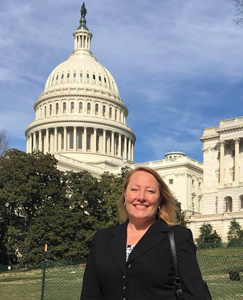 BAL’s President/CEO, Michelle Briscoe, spent a full day last month advocating for the private commercial laboratory industry on Capitol Hill in Washington, DC as part of the “Independence Day” activities sponsored by the American Council of Independent Laboratories (ACIL). With meetings scheduled in the offices of three members of the Senate and four members of the House of Representatives, plus a Congressional Briefing, the day was packed full of opportunities for Ms. Briscoe to discuss important issues that align with BAL’s core values with key legislative staffers.
BAL’s President/CEO, Michelle Briscoe, spent a full day last month advocating for the private commercial laboratory industry on Capitol Hill in Washington, DC as part of the “Independence Day” activities sponsored by the American Council of Independent Laboratories (ACIL). With meetings scheduled in the offices of three members of the Senate and four members of the House of Representatives, plus a Congressional Briefing, the day was packed full of opportunities for Ms. Briscoe to discuss important issues that align with BAL’s core values with key legislative staffers.
Mar 15, 2018
 Most regulations – whether for the environmental, pharmaceutical, or consumer product sectors – are based on the total concentration of an element present in a given sample. Many regulatory bodies and standards organizations have promulgated methods to support total elemental analyses in a variety of matrices, which can lead to the impression that providing quality data for such analyses is routine and uncomplicated. However, many methods fail to consider what impact the molecular forms (also known as chemical species) of an element may have on the accuracy of the procedure, which can lead to inaccurate analytical results. With our unique focus not just on total elemental quantitation but also on advanced speciation methodology, Brooks Applied Labs (BAL) can be trusted to provide accurate data for your project.
Most regulations – whether for the environmental, pharmaceutical, or consumer product sectors – are based on the total concentration of an element present in a given sample. Many regulatory bodies and standards organizations have promulgated methods to support total elemental analyses in a variety of matrices, which can lead to the impression that providing quality data for such analyses is routine and uncomplicated. However, many methods fail to consider what impact the molecular forms (also known as chemical species) of an element may have on the accuracy of the procedure, which can lead to inaccurate analytical results. With our unique focus not just on total elemental quantitation but also on advanced speciation methodology, Brooks Applied Labs (BAL) can be trusted to provide accurate data for your project.
To begin to understand how the speciation of an element can impact the accuracy of total elemental analyses, consider that nearly all methods are validated using only a small subset of the wide variety of real-world sample types that a data end user may be interested in analyzing. While it is generally the responsibility of the laboratory to ensure that the applied methods are fit-for purpose, not all samples of a given matrix type will be identical or contain the same forms of an element. Therefore, even if a method has been purportedly validated for a specific type of sample, unexpected biases can remain hidden if the specific chemistry of the sample and the element of interest are not understood and addressed when developing an analytical plan. All steps, ranging from sample collection, preservation, preparation, and analysis must be taken into consideration.
For example, in the case of selenium, numerous literature sources state that water samples will typically contain selenite and/or selenate. These selenium species may be accurately quantified by the techniques found in most promulgated methods, including sample collection into polyethylene bottles followed by preservation and digestion using mineral acids. However, more than a dozen other selenium species have been identified in both natural and anthropogenically-impacted waters, including volatile forms like dimethylselenide and reduced forms like selenocyanate. Standard analytical methods have been shown to generate biased data if samples contain volatile species, in part because standard sample containers are permeable to these forms of selenium. Similarly, low-biased results can be obtained if standard sample methods are applied to water samples containing reduced selenium species, as these forms can precipitate from solution during acidification with dilute mineral acids. Since many other elements can form volatile or reduced species – including arsenic, mercury, lead, antimony, tin, and iodine – biases due to blind application of standard methods are not limited to just selenium.
When you work with Brooks Applied Labs, you not only benefit from our state-of-the-art instrumentation and robust methods, but also from our experienced staff who can identify and anticipate these potential issues to ensure the quality of your data. Including speciation analyses alongside more traditional total elemental analyses can also provide you with greater confidence in your data, particularly when the results of these two separate analyses agree. And in cases where the two analyses may differ, our staff will work with you to interpret the results and recommend additional analyses to identify the source of the discrepancy. To learn more about how partnering with Brooks Applied Labs can help ensure the success of your project, please contact us today!
Mar 15, 2018
 The better question is, “Where are we not at this month?” Russ Gerads kicks things off in New Orleans where he is presenting on “Arsenic Speciation in Rice Products” at the ACS National Meeting & Expo on Sunday, 3/18. He then hops on a plane to meet up with Jamie Fox in San Francisco for the BioProcess International West conference taking place 3/19 – 3/22.
The better question is, “Where are we not at this month?” Russ Gerads kicks things off in New Orleans where he is presenting on “Arsenic Speciation in Rice Products” at the ACS National Meeting & Expo on Sunday, 3/18. He then hops on a plane to meet up with Jamie Fox in San Francisco for the BioProcess International West conference taking place 3/19 – 3/22.  That same week Michelle Briscoe will be at the ACIL P2 Conference in D.C., and Annie Carter will be in San Diego accepting our Award for Outstanding Business Achievement at the Environmental Industry Summit XVI. See more about this award in our last newsletter here, and follow us on Twitter and let us know if you will be at any of these meetings so we can connect!
That same week Michelle Briscoe will be at the ACIL P2 Conference in D.C., and Annie Carter will be in San Diego accepting our Award for Outstanding Business Achievement at the Environmental Industry Summit XVI. See more about this award in our last newsletter here, and follow us on Twitter and let us know if you will be at any of these meetings so we can connect!
Mar 15, 2018
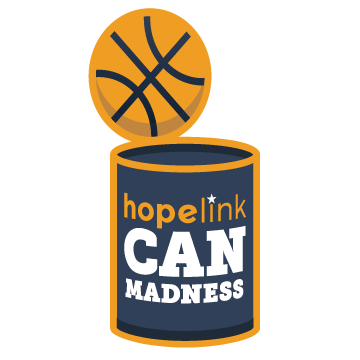 Brooks Applied Labs is competing in “Can Madness,” an exciting food and fund drive tournament supporting Hopelink food banks. BAL will be matching donations made by our staff, in addition to donating $1 per can of food donated by our employees. Our goal is to raise $1,000 and collect 1,000 pounds of food for Hopelink by April 6th. You can help us fight hunger in the greater Seattle region by making an online donation today! Thank you in advance for your support.
Brooks Applied Labs is competing in “Can Madness,” an exciting food and fund drive tournament supporting Hopelink food banks. BAL will be matching donations made by our staff, in addition to donating $1 per can of food donated by our employees. Our goal is to raise $1,000 and collect 1,000 pounds of food for Hopelink by April 6th. You can help us fight hunger in the greater Seattle region by making an online donation today! Thank you in advance for your support.
Feb 14, 2018
 Interest in the forms of arsenic in food and beverage products containing rice has significantly increased recently due to the amount of information available to the public regarding the carcinogenicity and ubiquitous nature of certain arsenic molecules. Application of a single method for the preparation and analysis of samples for arsenic speciation to all types of consumptive products containing rice (e.g., baby food, cereals, crackers, pasta, drinks) will result in haphazard failures to produce accurate results. The composition of the food or beverage and its interaction with the different arsenic species will ultimately dictate method viability.
Interest in the forms of arsenic in food and beverage products containing rice has significantly increased recently due to the amount of information available to the public regarding the carcinogenicity and ubiquitous nature of certain arsenic molecules. Application of a single method for the preparation and analysis of samples for arsenic speciation to all types of consumptive products containing rice (e.g., baby food, cereals, crackers, pasta, drinks) will result in haphazard failures to produce accurate results. The composition of the food or beverage and its interaction with the different arsenic species will ultimately dictate method viability.
Most consumers have a limited education regarding all of the different products that contain rice and rice-based products, including rice bran, rice flour, rice syrup, and rice bran oil. These products are being used as sweeteners, thickeners, leavening agents, sugar sources for brewing, and fillers. Arsenic speciation analyses of rice and rice-based products are relatively straightforward for experienced laboratories; however, when integrated as ingredients in more complex foods (fats, complex carbohydrates, oils, food additives), the chemistry of the product as a whole must be taken into consideration. An excellent example is the level of protonation of arsenite, or As(III), when present in consumptive products with a high fat content. Since the fat is relatively insoluble and the protonated As(III) is stable in that substrate, it can reduce the efficacy of traditional extraction approaches for arsenic speciation analyses.
Brooks Applied Labs has developed an array of different preparatory and analytical methods to account for the vast variety of consumptive products we perform testing on. Our project managers and applied scientists have an excellent understanding of the limitations and benefits for each method we offer. If you want to manage your risk with results you can rely upon, please contact us to discuss your project. BAL is your partner for making vital product safety and supply chain decisions.
Feb 14, 2018
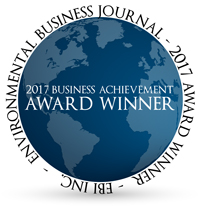 BAL is honored to receive an award from Environmental Business International for outstanding business achievement in 2017. As detailed in the award description, BAL has experienced dramatic growth in revenue and earnings over the past 3 years through diversification into new market sectors. BAL’s Vice President of Operations, Annie Carter, will be in San Diego at the Environmental Industry Summit’s Awards Ceremony on March 21st to accept this award on behalf of the company. Thank you to all our wonderful clients and employees who have made our growth and success possible!
BAL is honored to receive an award from Environmental Business International for outstanding business achievement in 2017. As detailed in the award description, BAL has experienced dramatic growth in revenue and earnings over the past 3 years through diversification into new market sectors. BAL’s Vice President of Operations, Annie Carter, will be in San Diego at the Environmental Industry Summit’s Awards Ceremony on March 21st to accept this award on behalf of the company. Thank you to all our wonderful clients and employees who have made our growth and success possible!
Feb 14, 2018
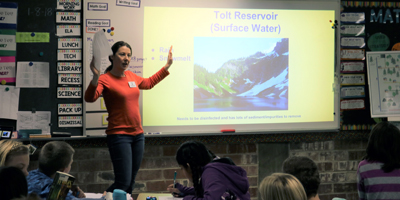 Last month BAL’s Senior Project Manager, Amanda Royal, presented to the 4th grade classes of Lake Forest Park Elementary School on the topic of groundwater supply and movement through their city. Over 90 students learned about aquifers, hydraulic time of travel, critical aquifer recharge areas, and how to protect and conserve this important water resource. The event was a huge success, providing future generations with scientific concepts to help them understand and protect their environment. BAL is proud to support our staff in these types of endeavors that further our vision and core values.
Last month BAL’s Senior Project Manager, Amanda Royal, presented to the 4th grade classes of Lake Forest Park Elementary School on the topic of groundwater supply and movement through their city. Over 90 students learned about aquifers, hydraulic time of travel, critical aquifer recharge areas, and how to protect and conserve this important water resource. The event was a huge success, providing future generations with scientific concepts to help them understand and protect their environment. BAL is proud to support our staff in these types of endeavors that further our vision and core values.
 Many discussion and research endeavors have focused on subsistence fishermen and their families, but limited resources have been directed at other ways of “living off-of the land”. Few know that there are a considerable number of people that live in the southern region of the United States that rely upon alligator meat as a primary source of protein in their diet. Brooks Applied Labs is funding a research endeavor characterizing the molecular forms of mercury in alligator meat to ascertain the toxicological risk for an underrepresented population. This is one of the largest scientific studies focused on metals contamination in alligators known to date. To learn about our findings as well as how partnering with Brooks Applied Labs can help ensure the success of your project, please contact us today!
Many discussion and research endeavors have focused on subsistence fishermen and their families, but limited resources have been directed at other ways of “living off-of the land”. Few know that there are a considerable number of people that live in the southern region of the United States that rely upon alligator meat as a primary source of protein in their diet. Brooks Applied Labs is funding a research endeavor characterizing the molecular forms of mercury in alligator meat to ascertain the toxicological risk for an underrepresented population. This is one of the largest scientific studies focused on metals contamination in alligators known to date. To learn about our findings as well as how partnering with Brooks Applied Labs can help ensure the success of your project, please contact us today!
 BAL’s President/CEO,
BAL’s President/CEO, 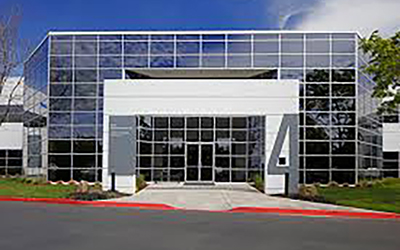
 Most regulations – whether for the environmental, pharmaceutical, or consumer product sectors – are based on the total concentration of an element present in a given sample. Many regulatory bodies and standards organizations have promulgated methods to support total elemental analyses in a variety of matrices, which can lead to the impression that providing quality data for such analyses is routine and uncomplicated. However, many methods fail to consider what impact the molecular forms (also known as chemical species) of an element may have on the accuracy of the procedure, which can lead to inaccurate analytical results. With our unique focus not just on total elemental quantitation but also on advanced speciation methodology, Brooks Applied Labs (BAL) can be trusted to provide accurate data for your project.
Most regulations – whether for the environmental, pharmaceutical, or consumer product sectors – are based on the total concentration of an element present in a given sample. Many regulatory bodies and standards organizations have promulgated methods to support total elemental analyses in a variety of matrices, which can lead to the impression that providing quality data for such analyses is routine and uncomplicated. However, many methods fail to consider what impact the molecular forms (also known as chemical species) of an element may have on the accuracy of the procedure, which can lead to inaccurate analytical results. With our unique focus not just on total elemental quantitation but also on advanced speciation methodology, Brooks Applied Labs (BAL) can be trusted to provide accurate data for your project.

 Interest in the forms of arsenic in food and beverage products containing rice has significantly increased recently due to the amount of information available to the public regarding the carcinogenicity and ubiquitous nature of certain arsenic molecules. Application of a single method for the preparation and analysis of samples for arsenic speciation to all types of consumptive products containing rice (e.g., baby food, cereals, crackers, pasta, drinks) will result in haphazard failures to produce accurate results. The composition of the food or beverage and its interaction with the different arsenic species will ultimately dictate method viability.
Interest in the forms of arsenic in food and beverage products containing rice has significantly increased recently due to the amount of information available to the public regarding the carcinogenicity and ubiquitous nature of certain arsenic molecules. Application of a single method for the preparation and analysis of samples for arsenic speciation to all types of consumptive products containing rice (e.g., baby food, cereals, crackers, pasta, drinks) will result in haphazard failures to produce accurate results. The composition of the food or beverage and its interaction with the different arsenic species will ultimately dictate method viability. BAL is honored to receive an award from
BAL is honored to receive an award from  Last month BAL’s Senior Project Manager,
Last month BAL’s Senior Project Manager,